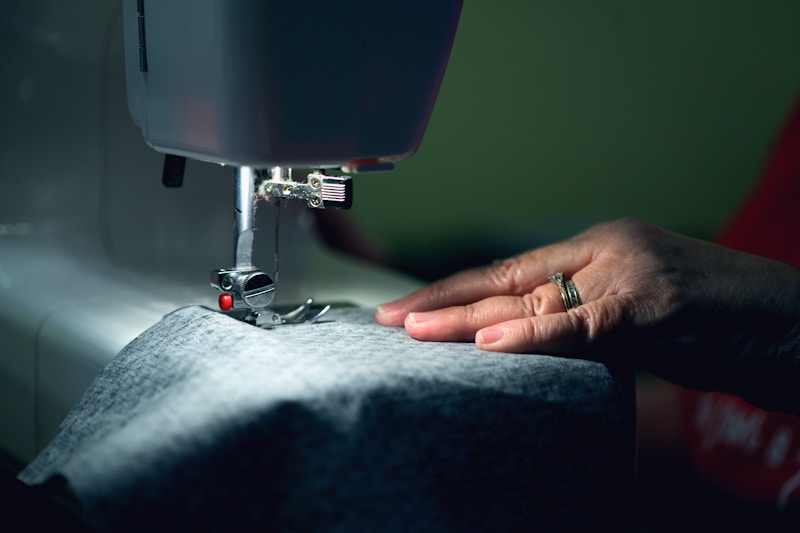Understanding Opacity and Sheerness in Fabrics: A Comprehensive Guide
Introduction to Fabric Opacity and Sheerness
When it comes to selecting the right fabric for your sewing or fashion projects, understanding the concepts of opacity and sheerness is essential. These terms play a crucial role in determining how a material will look and behave in various applications. In this comprehensive guide, we will explore the differences between opacity and sheerness in fabrics, the factors that influence them, and how to choose the right fabric for your needs.
What is Opacity?
Opacity refers to the degree to which a material prevents light from passing through it. In the context of fabrics, this means how much the underlying skin, clothing, or other layers will be visible when looking through the fabric. Opacity is typically categorized into three levels: opaque, semi-opaque, and sheer.
Categories of Opacity
| Opacity Level | Description |
| Opaque | Blocks light completely, making it impossible to see through. |
| Semi-Opaque | Allows some light to pass through while maintaining some modesty. |
| Sheer | Highly translucent, allowing most light to pass through, resulting in a see-through effect. |
What is Sheerness?
Sheerness refers to the transparency of a fabric and how light can permeate it. While opacity focuses on the inability to see through the fabric, sheerness is more about the clarity of vision through the material. A sheer fabric is often lighter and softer, making it perfect for layering and creating ethereal looks in garments.
The Relationship between Opacity and Sheerness
While opacity and sheerness are closely related, they are not interchangeable terms. A fabric can be sheer but semi-opaque, meaning you can see through it without it being completely transparent. Understanding this relationship is key in making the right fabric choices for your wardrobe or projects.
Factors Influencing Opacity and Sheerness in Fabrics
Several factors influence the opacity and sheerness of fabrics, including:
- Fiber Content: Natural fibers like cotton and linen tend to be more opaque, whereas synthetic fibers such as chiffon and organza are often sheer.
- Fabric Weave: The technique used in weaving threads plays a significant role. Tighter weaves create more opacity, while looser weaves promote sheerness.
- Fabric Weight: Lightweight fabrics are generally sheerer than heavier ones. Heavier fabrics usually offer more opacity and cover.
- Color and Dye: Darker colors often appear more opaque than lighter colors, even if the fabric itself is sheer.
Choosing the Right Fabric Based on Opacity and Sheerness
When selecting fabric for garments, home décor, or other projects, consider the following:
1. Purpose of the Fabric
If your project requires coverage, opt for opaque fabrics like denim or canvas. Sheer fabrics, like lace or tulle, are perfect for layering or creating elegant details.
2. Occasion and Wearability
For formal occasions, sheer overlays can add sophistication to an outfit, but make sure to pair them with opaque undergarments. For everyday wear, opt for opaque fabrics for comfort and modesty.
3. Seasonality
Sheer fabrics are often favored in warmer climates since they allow for breathability. Conversely, opaque fabrics provide warmth in colder seasons.
4. Styling
Consider how you intend to style the fabric. Sheer layers can create depth and dimension but require planning for underlayers. On the other hand, opaque fabrics can stand alone or serve as reliable bases for outfits.
Common Questions about Fabric Opacity and Sheerness
As we dive deeper into the subject of opacity and sheerness in fabrics, you might find yourself asking the following:
1. How can I test fabric opacity and sheerness?
To determine opacity and sheerness, hold the fabric up to a light source. If you can clearly see through it, it is likely sheer. If not, it is opaque or semi-opaque.
2. Are sheer fabrics suitable for all body types?
Sheer fabrics can be flattering for any body type when styled correctly. Layering and choosing the right undergarments can enhance the look.
3. Can I make sheer fabric opaque?
Yes, you can layer sheer fabrics over opaque textiles or underlining them with a thicker material to achieve the desired coverage.
4. What is the best way to care for sheer fabrics?
Sheer fabrics typically require gentle care. Always check the care label, but hand washing or using the delicate cycle on a washing machine is recommended.

Conclusion: Embracing Opacity and Sheerness in Your Fabric Choices
Understanding opacity and sheerness in fabrics is vital for anyone involved in fashion or sewing. By taking into account the fabric's fiber content, weave, weight, and color, you can make informed decisions that best suit your project needs. Whether you are looking for something opaque for modesty or sheer for elegance, knowing your options can enhance your creativity and practical skills.
In summary, when selecting the right fabric, consider the occasion, seasonality, and styling preferences. By understanding the relationship between opacity and sheerness, you not only improve your fabric selection skills but also elevate your overall style. Happy sewing!